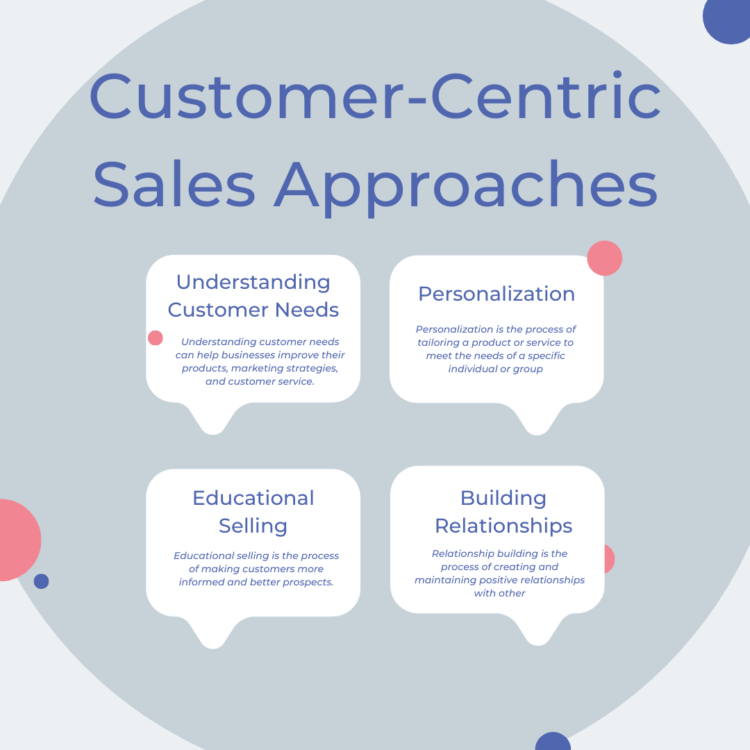1. Understanding Customer Needs:
Active Listening: Sales representatives should actively listen to customers to understand their pain points, challenges, and goals.
Empathy: Empathizing with customers helps build rapport and shows that the salesperson genuinely cares about solving their problems.
2. Personalization:
Tailored Solutions: Instead of offering one-size-fits-all solutions, customize offerings to meet the specific needs and preferences of individual customers.
Data Utilization: Leverage customer data to understand preferences, buying history, and behaviors, enabling personalized interactions.
3. Educative Selling:
Consultative Approach: Adopt a consultative approach by educating customers about the product or service and how it can address their specific needs.
Providing Value: Share relevant industry insights and information that can help customers make informed decisions.
4. Building Relationships:
Long-Term Focus: Customer-centric sales focus on building long-term relationships rather than just closing a deal.
Post-Sale Support: Offer ongoing support and follow-up to ensure customer satisfaction after the sale is complete.
5. Transparency:
Honesty and Integrity: Be transparent about product features, pricing, and potential limitations. Building trust is crucial for long-term customer relationships.
Clear Communication: Clearly communicate the value proposition and benefits of the product or service.
6. Adaptability:
Flexibility: Be adaptable and responsive to changes in customer needs or market conditions.
Continuous Improvement: Regularly gather feedback and seek opportunities to improve the customer experience.
7. Cross-Functional Collaboration:
Team Collaboration: Foster collaboration between sales, marketing, customer support, and other departments to ensure a seamless customer experience.
Feedback Loop: Establish a feedback loop to share insights gained from customer interactions across the organization.
8. Technology Integration:
Customer Relationship Management (CRM): Utilize CRM systems to track customer interactions, preferences, and buying history.
Sales Automation: Implement automation tools to streamline routine tasks, allowing sales teams to focus on building relationships.
9. Customer Feedback:
Surveys and Reviews: Actively seek customer feedback through surveys, reviews, and other channels to understand satisfaction levels and areas for improvement.
Continuous Learning: Use feedback to continuously learn and adapt sales strategies.
10. Measuring Success:
Customer Success Metrics: Beyond traditional sales metrics, measure success by customer satisfaction, retention rates, and the overall customer experience.










No Comments
Leave Comment